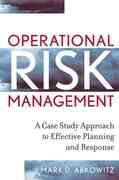Question
1.Assuming no other use for its facilities, what is the highest price per unit that Spahr Company should be willing to pay for the part?
1.Assuming no other use for its facilities, what is the highest price per unit that Spahr Company should be willing to pay for the part?
a.$10
b.$8
c.$12
d.$6
Use the information below to answer the following question(s):
Cruise Company produces a part that is used in the manufacture of one of its products. The unit manufacturing costs of this part, assuming a production level of 6,000 units, are as follows:
Direct materials
$4.00
Direct labour
$4.00
Variable manufacturing overhead
$3.00
Fixed manufacturing overhead
$4.00
Total cost
$15.00
The fixed overhead costs are unavoidable.
2.Assuming Cruise Company can purchase 6,000 units of the part from Suri Company for $13 each, and the facilities currently used to make the part could be rented out to another manufacturer for $24,000 a year, what should Cruise Company do?
a.Make the part and save $6.00 per unit.
b.Make the part and save $2.00 per unit.
c.Buy the part and save $2.00 per unit.
d.Buy the part and save $4.00 per unit.
3.Assume Cruise Company can purchase 6,000 units of the part from Suri Company for $13.00 each, and the facilities currently used to make the part could be used to manufacture 6,000 units of another product that would have an $7 per unit contribution margin. If no additional fixed costs would be incurred, what should Cruise Company do?
a.Make the new product and buy the part to earn an extra $5.00 per unit contribution to profit.
b.Make the new product and buy the part to earn an extra $6.00 per unit contribution to profit.
c.Continue to make the part to earn an extra $2.00 per unit contribution to profit.
d.Continue to make the part to earn an extra $5.00 per unit contribution to profit.
4.What does an unfavourable direct materials price variance indicate?
a.The actual cost of materials purchased was less than the standard cost of materials purchased.
b.The standard cost of materials purchased was less than the actual cost of materials purchased.
c.The standard cost of materials purchased was greater than the actual cost of materials purchased.
d.The actual quantity of materials used was less than the standard quantity of materials used for actual production.
5.In flexible budgets, costs that remain the same regardless of the output levels within the relevant range are
a.allocated costs.
b.budgeted costs.
c.fixed costs.
d.variable costs.
e.estimated costs.
6.Actual overhead is $496,000, while budgeted overhead is $598,000. What is the fixed overhead static-budget variance if 250,000 units are produced and 350,000 are budgeted?
a.$80,000 favourable
b.$100,000 unfavourable
c.$100,000 favourable
d.$101,000 unfavourable
$102,000 favourable
Step by Step Solution
There are 3 Steps involved in it
Step: 1

Get Instant Access to Expert-Tailored Solutions
See step-by-step solutions with expert insights and AI powered tools for academic success
Step: 2

Step: 3

Ace Your Homework with AI
Get the answers you need in no time with our AI-driven, step-by-step assistance
Get Started


